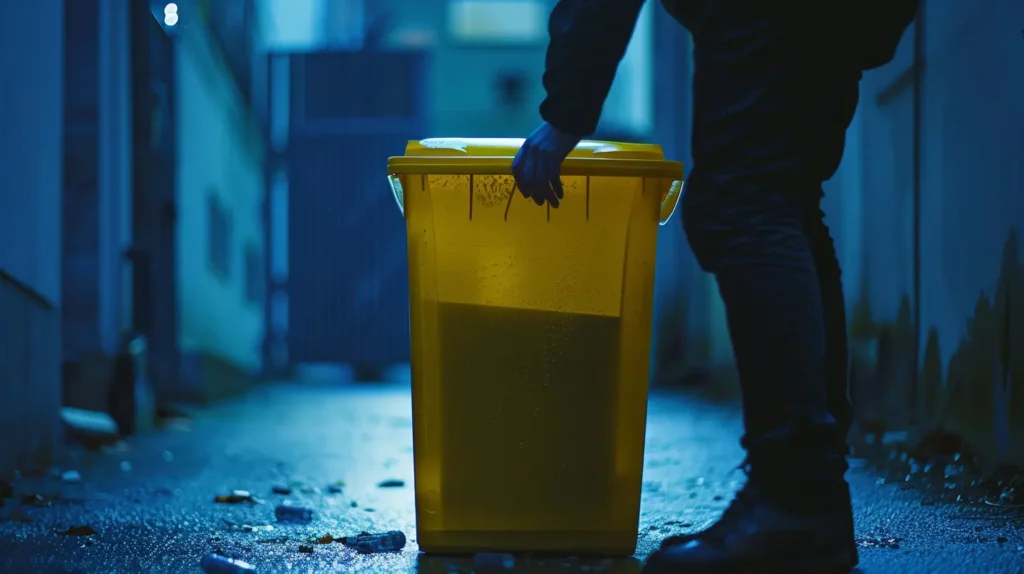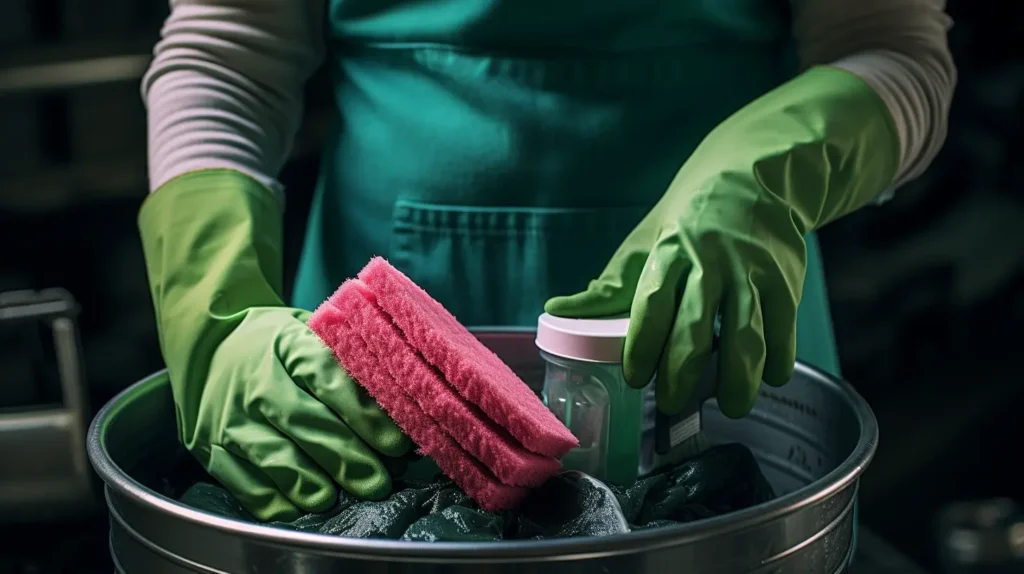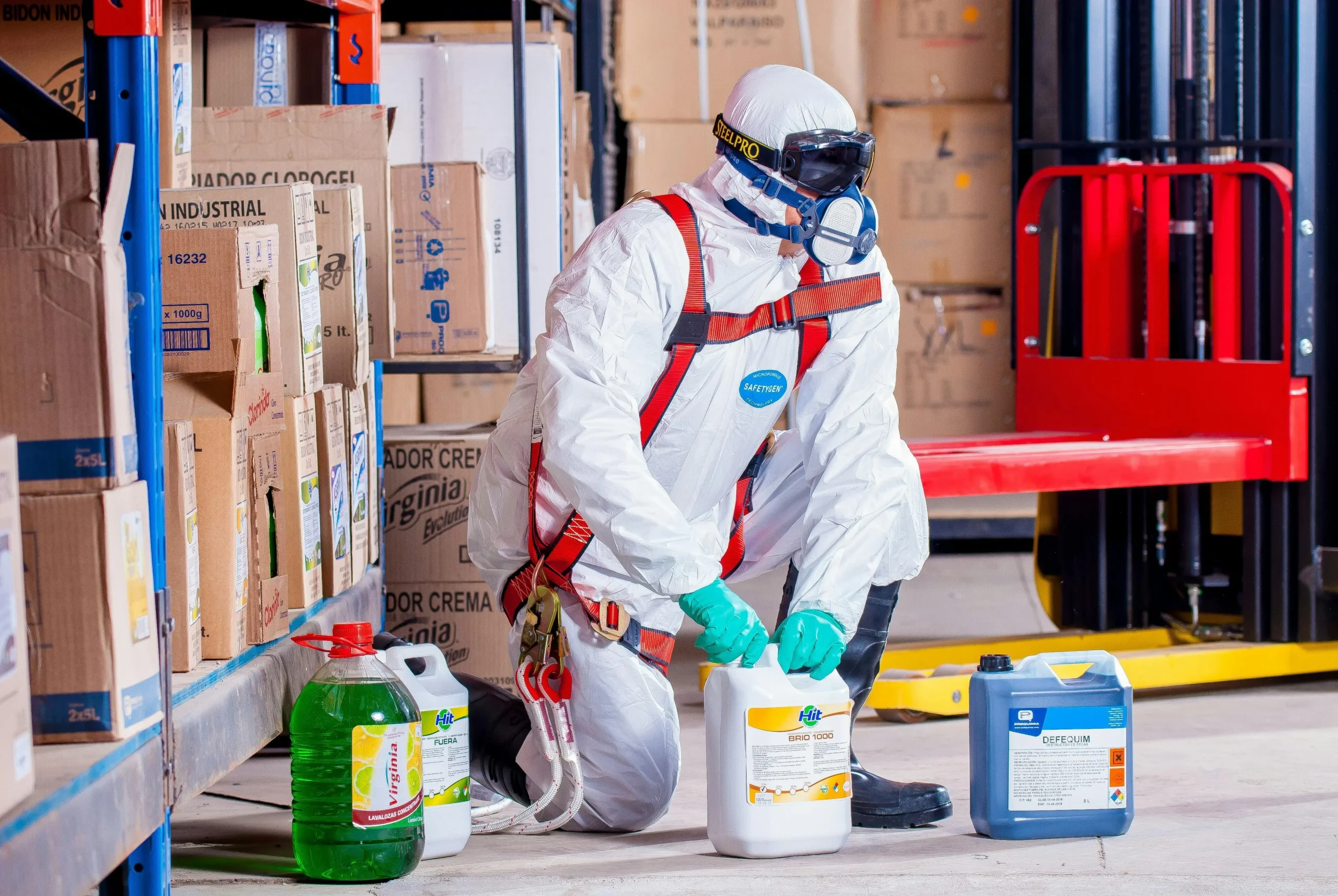Curious about which cleaning chemicals you should never mix?
Mixing many cleaning products, such as chlorine bleach, can create toxic fumes or even explosions due to chemical reactions. It’s crucial to understand the dos and don’ts of chemical combinations for a safe cleaning routine.
In this guide, I’ll discuss on what happens when bleach meets ammonia or vinegar, and why you should steer clear of these hazardous mixtures.
Key Takeaways
- Be cautious when mixing cleaning chemicals: Avoid mixing different cleaning products as it can lead to hazardous chemical reactions.
- Understand the common hazardous combinations: Recognize which cleaning products should never be mixed, such as bleach and ammonia, to prevent dangerous outcomes.
- Follow safe cleaning practices: Stick to using one cleaning product at a time and ensure proper ventilation when working with chemicals to minimize risks.
- Seek immediate help in case of accidental mixing: If accidental mixing occurs, leave the area immediately, ventilate the space, and seek medical advice if exposed to the fumes.
- Refer back to specific examples: Remember the dangers of mixing bleach and ammonia as highlighted in the article, and always read product labels for warnings and instructions.
- Stay informed and take precautions: Stay informed about the potential dangers of mixing cleaning chemicals and take necessary precautions to ensure a safe cleaning environment.
1. Why Mixing Cleaning Chemicals is Dangerous

1. Toxic Gas Formation
Certain chemical combinations can produce toxic gases like chlorine gas or phosgene. These gases are harmful to inhale and can cause serious health issues.
For instance, mixing bleach with ammonia can result in the release of chlorine gas, which can lead to breathing difficulties and even be fatal.
Another example: When you’re disinfecting with Lysol, don’t mix it with bleach. The bleach oxidizes the 2-benzyl-4-chlorophenol benzyl-4-chlorophenol that is in Lysol, resulting in various irritating and toxic compounds.
2. Violent Reactions
The mixtures may cause violent reactions, leading to fires or explosions.
For example, combining bleach with vinegar produces chlorine gas and chloramine vapors, increasing the risk of a fire hazard. It’s important to avoid such combinations to prevent accidents and ensure personal safety.
3. Ineffectiveness and Corrosion
Improper mixing can render cleaning products ineffective or create corrosive substances. This not only diminishes the cleaning capabilities but also poses a risk to surfaces and equipment. For instance, mixing acidic cleaners with bleach can generate chlorine gas and lead to corrosion of metal surfaces.
One time, I mixed two cleaning products by accident and it made me feel dizzy. It showed me how important it is to know about chemicals and how they can react with each other.
It’s crucial to always read the labels on cleaning products and follow the instructions for proper usage. Keeping different cleaning agents separate and using them as directed can prevent hazardous reactions.
This is a great PDF on Keeping Your Family Safe From Household Chemicals (PDF)
2. Common Hazardous Combinations
1. Bleach Mixes
Avoid mixing bleach with other cleaners as it can release toxic fumes, posing serious health risks. It’s crucial to understand the potential dangers associated with combining bleach and take necessary precautions. Proper disposal of any mixed bleach solutions is essential to prevent accidents.
2. Vinegar Mixes
When using vinegar, refrain from mixing it with bleach or other acidic cleaners to maintain a safe cleaning environment. Understanding the chemical properties of vinegar is important for leveraging its cleaning benefits without compromising safety. I once accidentally mixed vinegar with bleach and learned about the harmful reactions that can occur.
3. Drain Cleaners
Never mix different types of drain cleaners as this could lead to the release of dangerous gases, causing harm. It’s vital to handle drain cleaners with caution to avoid accidental chemical reactions. Ensuring proper ventilation when using drain cleaners minimizes health risks significantly.
4. Miscellaneous Mixes
Awareness of uncommon chemical combinations is crucial to prevent potential dangers. Stay informed about specific cleaning products that should not be mixed to avoid hazardous situations. I once read about someone unknowingly mixing ammonia and bleach, resulting in toxic fumes being released.
This will be a good read for you on how to dispose of cleaning chemicals
3. Specific Dangerous Mixes

Beal and vinegar, Bleach and Ammonia, Bleach and Rubbing Alcohol, Hydrogen Peroxide, and Vinegar are a few listed chemicals that you should never mix. As we go along in more depth there are various chemicals that we should never mix.
1. Bleach and Vinegar
Mixing bleach and vinegar can lead to the formation of toxic chlorine gas, which poses severe health risks. It’s important to understand that combining these two chemicals can result in a dangerous chemical reaction. Therefore, it is crucial to keep bleach and vinegar separate when cleaning to ensure a safe environment.
2. Bleach and Ammonia
The combination of bleach and ammonia releases toxic gases, leading to potential respiratory issues and skin irritations. To avoid harm, it’s essential to store bleach and ammonia in different areas, preventing accidental mixing. This separation helps minimize the risk of exposure to hazardous fumes.
3. Bleach and Rubbing Alcohol
Mixing bleach and rubbing alcohol can produce chloroform, which poses significant health hazards if inhaled. To maintain safety during cleaning routines, it’s imperative to handle bleach and rubbing alcohol separately. By doing so, you can prevent the formation of this harmful substance.
4. Hydrogen Peroxide and Vinegar
When hydrogen peroxide and vinegar are combined, they can create paracetic acid, which presents potential respiratory and skin hazards. It is important to exercise caution when using these substances together. Using hydrogen peroxide and vinegar separately is crucial for ensuring a safe cleaning environment.
In my experience, I once mistakenly mixed bleach with another cleaning agent, causing strong fumes that made me feel dizzy. It was a valuable lesson on the importance of understanding chemical combinations for safety.
| Dangerous Mix | Resulting Chemical Reaction |
|---|---|
| Bleach and Vinegar | Formation of toxic chlorine gas |
| Bleach and Ammonia | Release of toxic gases, potential respiratory issues and skin irritations |
| Bleach and Rubbing Alcohol | Production of chloroform, significant health hazards if inhaled |
| Hydrogen Peroxide and Vinegar | Release of toxic gases, potential respiratory issues, and skin irritations |
4. Safe Cleaning Practices
1. Read Labels
Always read product labels to identify chemical ingredients and warnings. Follow instructions carefully to avoid accidental mixing of incompatible chemicals. Educate yourself on the proper use of cleaning products by reading labels thoroughly.
2. Use Alternatives
Explore safer cleaning alternatives to avoid hazardous chemical combinations. Opt for natural cleaning solutions to minimize health risks associated with toxic mixtures. Consider eco-friendly cleaning products as effective substitutes for harsh chemicals.
3. Proper Ventilation
Ensure proper ventilation when using cleaning chemicals to prevent inhalation of toxic fumes. Open windows and doors to promote air circulation and reduce exposure to harmful vapors. Use exhaust fans or wear a mask when working with strong cleaning agents indoors.
4. Wear Protection
Protect yourself by wearing gloves, goggles, and a mask when handling cleaning chemicals. Use appropriate protective gear to prevent skin contact and inhalation of harmful substances. Prioritize safety by wearing protective clothing to minimize the risk of chemical exposure.
I always make sure to read the labels on any new cleaning products I buy, especially if they’re unfamiliar. It’s crucial for me to understand what I’m using and how it should be handled safely.
When exploring alternatives, I’ve found that vinegar, baking soda, and lemon juice are excellent natural options for various cleaning needs around the house.
Proper ventilation is key in my household when using strong cleaners. Opening windows and turning on fans helps keep the air fresh and reduces the impact of fumes.
5. What to Do in Case of Accidental Mixing
1. Ventilate Area
Maintain good airflow in the cleaning area to reduce the concentration of chemical vapors. This can be achieved by opening windows and doors, allowing fresh air to circulate and dilute the harmful fumes. Using fans or air purifiers can further improve air quality, ensuring a safer environment for everyone involved.
2. Avoid Exposure
Minimize direct contact with cleaning chemicals to prevent skin irritation and burns. It’s essential to wear protective gloves and clothing when handling potentially hazardous substances. Furthermore, keeping a safe distance from strong-smelling products can help avoid inhaling harmful fumes. Storing chemicals in well-ventilated areas is also crucial to reduce the risk of accidental exposure.
3. Seek Help
Seek medical assistance immediately if exposed to harmful chemical mixtures. Prompt action is crucial in preventing severe health consequences. Contacting poison control or a healthcare professional is vital in case of accidental ingestion or inhalation. It’s important not to hesitate to seek help if experiencing symptoms of chemical exposure.
6. Closing Thoughts
here you have it – mixing certain cleaning chemicals can be seriously dangerous. From creating toxic fumes to causing chemical burns, the risks are real.
By following safe cleaning practices and being aware of hazardous combinations, we can keep ourselves and our homes safe.
If you ever find yourself in a situation where cleaning chemicals are accidentally mixed, remember to ventilate the area, evacuate if necessary, and seek medical help immediately.
Let’s all do our part to spread the word about the dangers of mixing cleaning chemicals and ensure that everyone has the knowledge to clean safely.
7. Frequently Asked Questions
1. Is it safe to mix ammonia and bleach for cleaning?
No, it’s extremely dangerous to mix ammonia and bleach as it produces toxic chloramine vapor, which can cause respiratory issues and even be fatal. Always read labels and avoid combining these chemicals. As chemical manufacturers in Canada, we always provide labels with our chemicals on how to use them and in what quality.
2. What should I do if I accidentally mix two cleaning chemicals?
If you accidentally mix cleaning chemicals, immediately leave the area to get fresh air. Ventilate the space by opening windows and doors. If you experience any symptoms like dizziness or difficulty breathing, seek medical help right away.
3. Can I mix vinegar and hydrogen peroxide for cleaning?
It’s not recommended to mix vinegar and hydrogen peroxide as this combination can create peracetic acid, which is an irritant to the eyes, skin, and respiratory system. It’s best to use these substances separately for cleaning purposes.
4. Why is it important to follow safe cleaning practices?
Following safe cleaning practices is crucial to prevent harmful chemical reactions that can lead to serious health risks. By understanding which chemicals not to mix and practicing caution, you protect yourself and others from potential harm. For instance, our pressure-washing chemicals are specially built for pressure-washing services.
5. What are some common hazardous combinations of cleaning chemicals?
Common hazardous combinations include mixing bleach with acids like vinegar or toilet bowl cleaners containing hydrochloric acid. These combinations can release toxic gases that pose significant health hazards when inhaled.
6. How can I ensure the safe handling of cleaning chemicals at home?
To ensure safe handling of cleaning chemicals at home, always read product labels carefully. Store them in their original containers, away from food or drinks. Never mix different products unless specified as safe on the labels.



